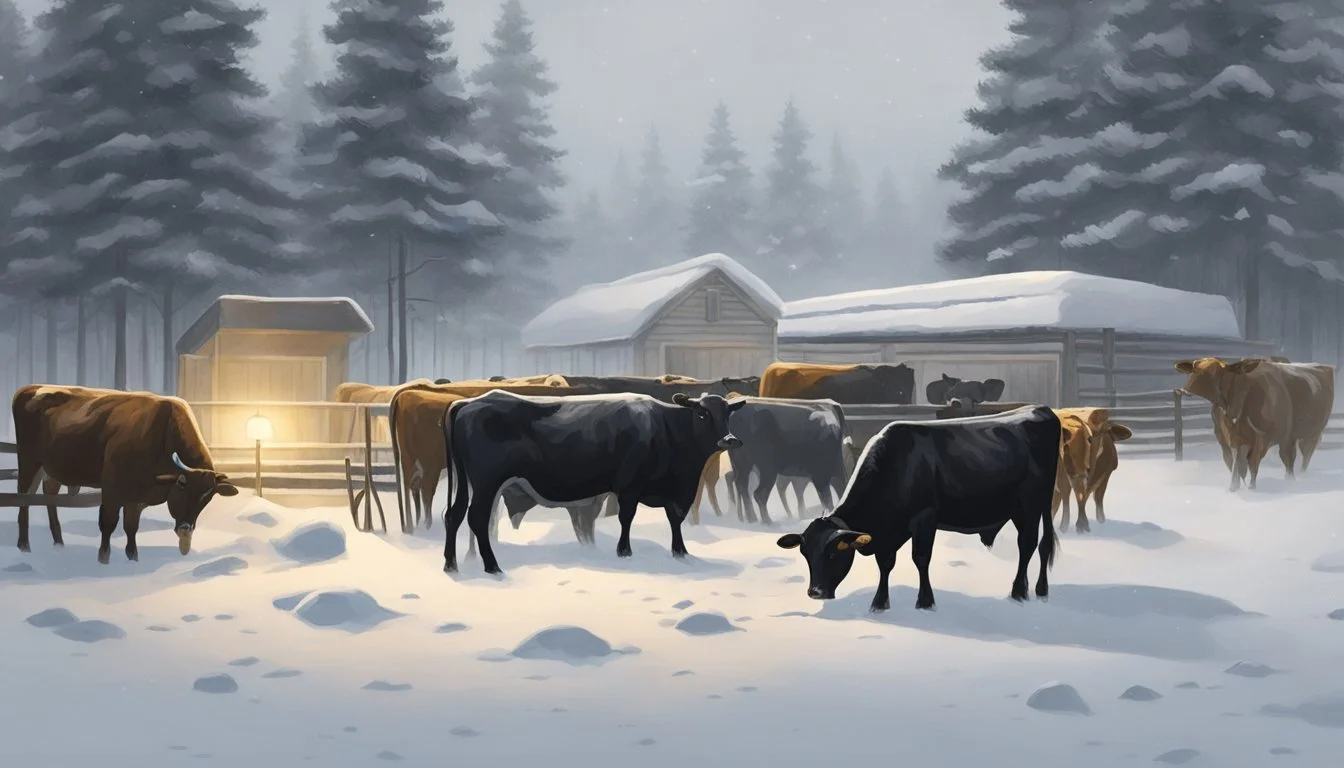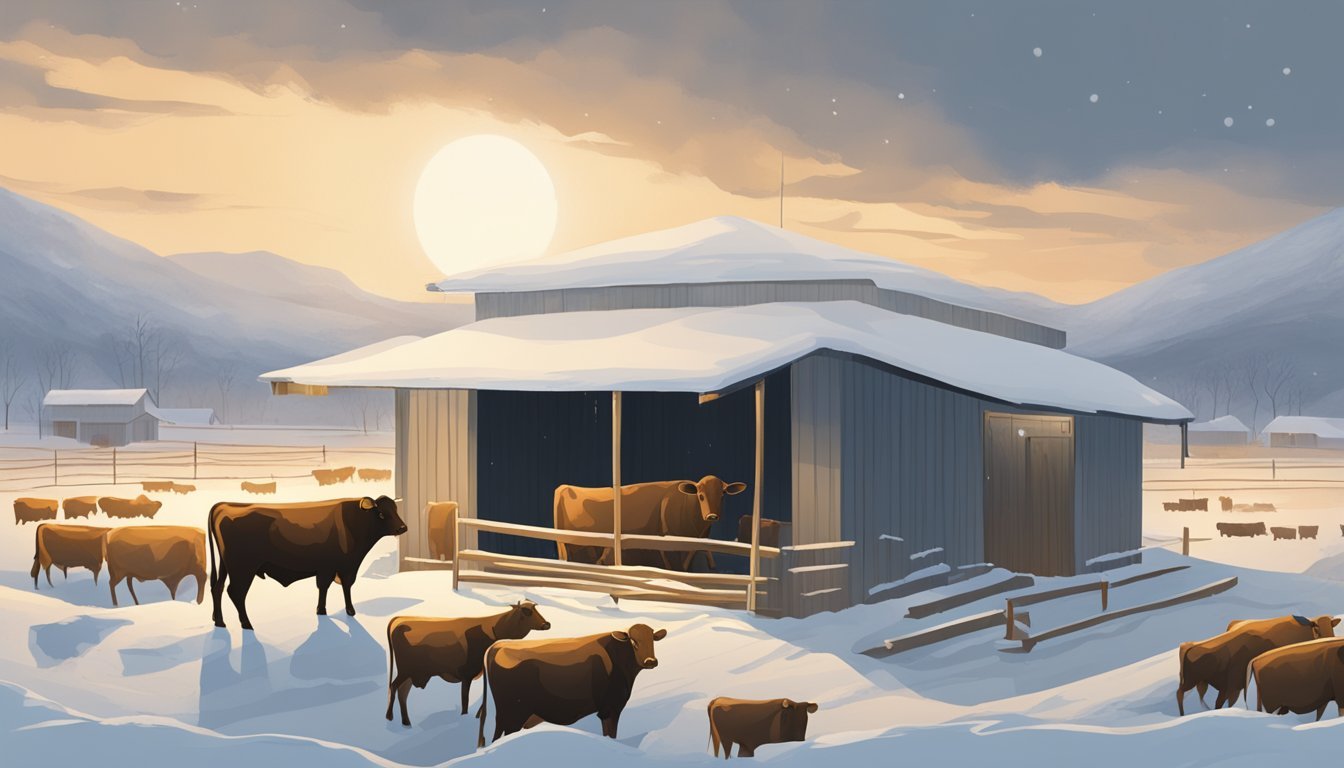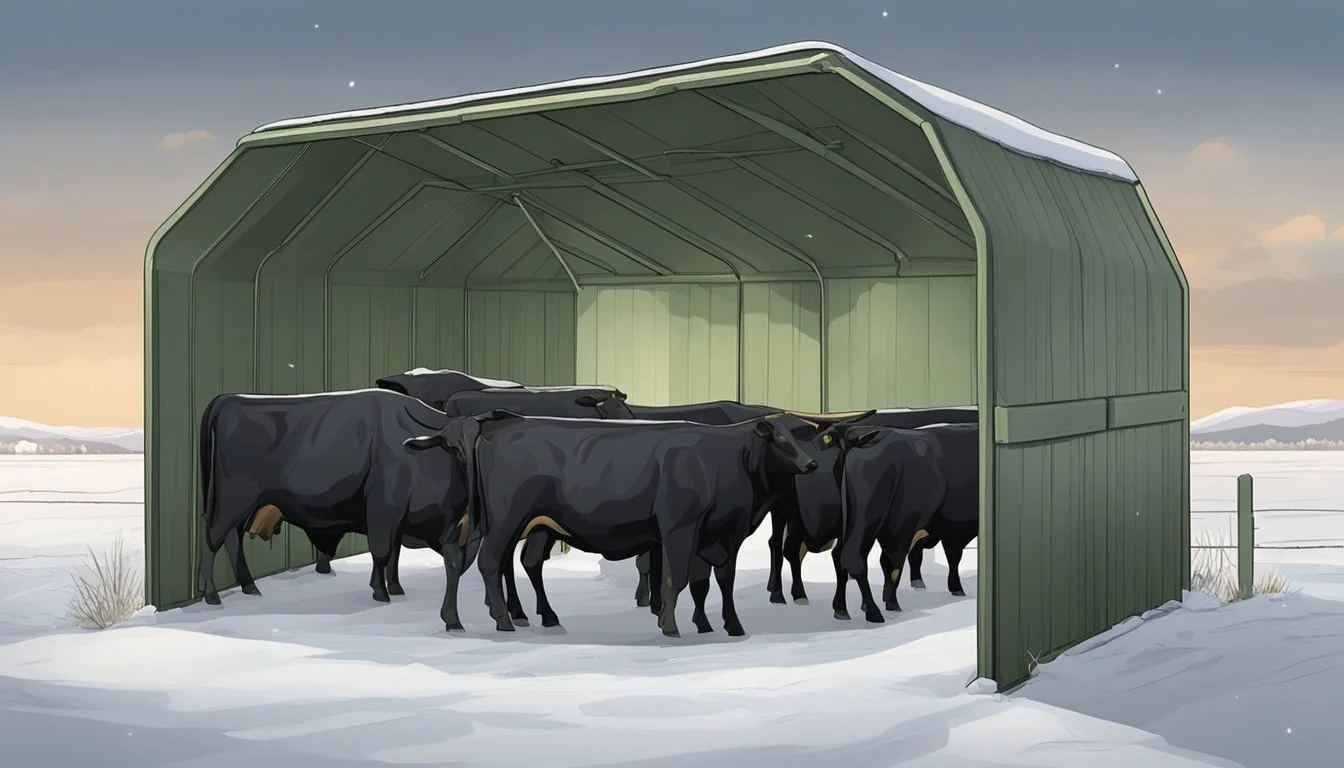How do I manage cattle during extreme weather events
Proven Strategies for Livestock Protection
Managing cattle during extreme weather events presents unique challenges that require diligent preparation and responsive strategies. Severe winter conditions, such as extreme cold and heavy snowfall, demand increased caloric intake for cattle to maintain their body temperature and body condition. Securing consistent access to water is crucial, as water sources can easily be compromised, potentially leading to a decline in feed intake and subsequent loss of body condition. Providing cattle with additional caloric resources helps them ride out severe winter weather.
In addition to nutrition, shelter plays a vital role in protecting cattle from harsh elements. While cattle are naturally resilient, offering windbreaks or dry bedding areas can minimize the stress caused by cold and wet conditions. It is also essential to monitor the herd closely for signs of distress or illness that can result from weather-induced challenges.
To ensure the well-being of cattle during such events, ranchers must anticipate and adapt to the varying needs that arise with changing conditions. This involves not only preparing ahead of the season but also remaining vigilant and flexible as weather patterns unfold. Keeping machinery operational and adjusting feed rations to maintain consistent feed intake are part of the routine adjustments in a well-managed cattle operation facing extreme weather.
Understanding the Impact of Extreme Weather on Cattle
Extreme weather poses substantial challenges to cattle, primarily through cold stress, which impacts their behavior, physiology, and overall health. Management strategies must account for the increased energy requirements and the need for adequate body condition and insulation to maintain cattle well-being during such events.
Effects of Cold Weather on Cattle
Cold weather significantly increases a cattle's energy needs. They typically consume more feed to stay warm when temperatures fall below their lower critical temperature, a threshold below which the animal must expend additional energy to maintain its core body temperature. This increased demand for feed can vary from a modest 2% to a striking 25%. Proper nutrition during extreme cold is vital for cattle to generate enough body heat through digestion.
Identifying Signs of Cold Stress in Livestock
Recognizing cold stress in cattle is crucial for timely intervention. Indicators of stress include shivering, huddling together for warmth, lethargy, and a decrease in feed intake which can further exacerbate the situation. These signs suggest that the cattle are expending more energy on staying warm than on growth or production, which can be detrimental to their health if not addressed promptly.
The Role of Cattle Acclimation to Winter Weather
Cattle gradually acclimate to colder temperatures, but sudden drops in temperature can catch them unprepared, increasing their vulnerability to cold stress. Acclimatization allows cattle to adjust their metabolism and body heat distribution, helping them to better tolerate the cold. Thicker coats and changes in blood flow are physiological adaptations that develop over time to defend against harsh conditions.
Importance of Body Condition and Insulation
The body condition of cattle profoundly affects their ability to withstand extreme weather. Animals with a higher body condition score (BCS) have more fat insulation, which helps to conserve body heat. Additionally, providing windbreaks or dry bedding can significantly increase the insulation factor, reducing the amount of energy cattle need to maintain their core body temperatures during severe weather conditions.
Shelter and Environmental Management
In managing cattle during extreme weather conditions, it is crucial to offer protection through well-designed shelters, proper bedding materials, and effective means to mitigate the impact of wind, snow, ice, and drifting snow. These measures are essential to conserve the animals' body heat and ensure their safety and well-being.
Designing Appropriate Shelter and Bedding
Proper shelter design is imperative for cattle during extreme weather events. Shelters must provide enough space and ventilation while protecting against the elements. It's important to choose bedding materials that offer good insulation to help preserve body heat. Straw and wood shavings are materials that provide both comfort and energy conservation.
Using Windbreaks Effectively
Windbreaks play a significant role in reducing wind speed and protecting livestock. Strategic placement of natural or artificial windbreaks can shield cattle from cold winds, thereby reducing cold stress. These structures should be sturdy and positioned perpendicular to prevailing winds to minimize chilling.
Managing Snow and Ice Build-Up
Regular removal of snow and management of ice build-up in housing areas and paths is necessary to prevent injuries and ensure animal movement. Accumulated snow can be relocated to create a barrier that further insulates against wind, whereas timely action against ice accumulation preserves the safety of the environment.
Ensuring Adequate Foot Traction
Maintaining adequate foot traction is critical to prevent falls and injuries. Implementing measures like spreading sand or non-toxic grit can help cattle maintain footing on icy surfaces. This practice not only mitigates animal stress but also aids handlers in managing the cattle more safely during extreme weather.
Nutritional Management During Cold Weather
During cold weather, cattle energy needs increase to maintain body temperature and performance. Providing adequate nutrition while avoiding digestive issues is key to sustaining cattle health and productivity.
Adjusting Feed Rations for Energy Needs
To meet the elevated energy requirements in cold weather, beef cows may require an increase in feed energy density. Typically, feed rations should be adjusted to include higher levels of energy through grains or energy supplements. For instance, if low-quality forage is used, supplementation with a high-protein cube or a high-energy feed could be necessary. Overlooking this can result in poor cow performance and weight loss.
Maintaining Water Access and Avoiding Dehydration
Cattle still require access to water in cold conditions to aid in digestion and metabolic processes. Water should be kept ice-free to encourage drinking and prevent dehydration, which could exacerbate cold stress. Heated waterers or water tank de-icers can be useful tools to maintain consistent water access.
Importance of Roughage and Forage in the Diet
Incorporating sufficient roughage and forage in the diet is critical for maintaining proper rumen function and energy content in the diet. High-quality hay or silage can help provide the necessary fiber to maintain rumen health and reduce the risk of digestive upset. The effectiveness of roughage in promoting heat from fermentation during digestion is a natural way to help cattle maintain body temperature.
Monitoring and Managing Feed Intake
Close monitoring of feed intake ensures cattle receive the required nutrients to withstand the cold. Overeating, especially when high-energy grains are provided, can cause acidosis, a sudden drop in rumen pH leading to digestive upset. To avoid this, gradually increase rations and maintain a consistent feeding schedule. In a feedlot setting, observing changes in feed consumption patterns can alert producers to necessary ration adjustments.
Cattle Health and Comfort
Maintaining cattle health and comfort during extreme weather events necessitates specific management practices. It is crucial to safeguard cattle from severe cold and wind while ensuring their welfare and reducing the risks associated with winter conditions.
Ensuring Adequate Body Heat Retention
Cattle rely on their thick hair coat for insulation against cold temperatures, but during extreme cold, additional measures are necessary. Providing windbreaks and dry bedding can significantly increase cattle comfort. Insulating barns and shelter areas prevent the loss of body heat.
Preventing Frostbite and Other Injuries
Exposure to extreme cold and wind can lead to frostbite, particularly on the extremities of cattle such as ears and teats. It is important to monitor cattle regularly for signs of frostbite and apply preventative measures such as ensuring shelters are accessible to protect against the harsh elements.
Managing Calving and Young Calves in Winter
Calving during winter introduces extra challenges due to the vulnerability of newborn calves to cold stress. They need immediate attention to ensure they are dry and warm, ideally moved to a well-bedded, draft-free environment. Providing calves with adequate colostrum shortly after birth is vital for their survival.
Minimizing Mobility Problems and Risks of Injury
Mobility problems in cattle can increase during winter due to slippery conditions and hardened ground. Implementing regular clearing of ice, and applying non-toxic deicers or sand for traction in high-traffic areas can help minimize the risk of injury from slips and falls.
Operational Practices for Extreme Weather
In the face of extreme weather events, cattle producers must adopt robust operational practices to safeguard their livestock and ensure continuity of operations. These practices play a significant role in minimizing the impact on cattle health and agricultural productivity.
Implementing Winter Management Strategies in Feedlots
Cattle producers are advised to prioritize pens for youngest and lightest calves, as they have higher maintenance energy requirements during cold periods. It's essential to provide ample forages, which act as an internal furnace for cattle, generating body heat through digestion. Additionally, adjusting feed energy levels can help meet increased maintenance energy needs, ensuring cattle maintain condition throughout extreme cold.
Securing Pens and Yards Against Winter Elements
In regions such as the Midwest, where extreme winter weather is a common occurrence, securing feedlot pens against the elements is vital. It's recommended to manage lot conditions proactively by removing snow from outside yards and ensuring pen surface drainage is optimal to prevent ice build-up. Windbreaks or shelter belts can greatly reduce wind chill, and maintaining a clean feed bunk apron is crucial to promote easy access to feed.
Planning for Feedlot Maintenance
Feedlot maintenance requires careful planning before winter hits. Priority pens must be identified, and regular upkeep is essential to prevent deterioration of lot surface conditions, especially following snowmelt or heavy rainfall. Cattle producers should have contingencies in place for severe weather, such as ensuring a sufficient stockpile of bedding material to keep cattle dry and comfortable during long periods of cold and wet conditions. Regular pen maintenance checks ensure feeders and water sources remain operational and accessible.
Adapting Management to Specific Weather Events
Effective cattle management during harsh winter weather is crucial for maintaining animal health and operational efficiency. By understanding specific conditions such as ice storms, heavy snowfall, and extreme cold, producers can implement tactics that ensure the well-being of their herd.
Responding to Ice Storms and Heavy Snowfall
During ice storms and heavy snowfall, immediate action is necessary to safeguard cattle, particularly during calving season. Ensuring that shelters are strong enough to withstand the weight of ice and snow can prevent collapse, protecting both cattle and workers. Additionally, regular removal of snow from critical pathways is essential to maintain access to feed and water.
Preventing Drifting in Feedlot Areas
Drifting snow can accumulate rapidly in feedlot areas, hindering cattle movement and access to feed bunks. Erecting snow fences strategically to the north and upwind side of pens creates a barrier that controls snow deposition. This redirection helps to minimize operational disruptions and maintain consistent feed intake by the cattle.
Coping with Extreme Cold Spells
During extreme cold spells, cattle require additional energy to sustain their body heat. It is crucial to adjust feeding regimens to include higher-energy rations; this is particularly imperative for young or thin cattle that are more susceptible to cold stress. Providing windbreaks and dry bedding will also aid in keeping the animals warmer and reducing the overall impact of the cold weather.
By tailoring management practices to the specific challenges of winter weather conditions, livestock producers can ensure their cattle remain healthy and productive throughout the season.
Economic Considerations and Performance Metrics
In managing cattle during extreme weather events, the economic implications and performance metrics are crucial factors. These can affect both short-term and long-term profitability of a cattle operation. It is vital to understand the costs associated with managing cold weather and how it can impact cattle weight and carcass quality.
Calculating the Cost of Cold Weather Management
When temperatures drop, additional resources are required to maintain cattle health and performance levels. Producers should account for the increased costs of bedding, feed, and labor. Providing strategic feedlot bedding can be essential, especially for lighter-weight new arrivals and those nearing slaughter, to mitigate the impacts of severe cold. Finding a balance between extra expenses and the benefits to cattle comfort is critical for economic efficiency.
Evaluating the Impact on Performance and Final Weight
Cold stress can lead to diminished performance in cattle due to increased energy requirements and changes in feed intake patterns. Monitoring weight gain during and after extreme weather events is essential for understanding the effects on final weight. Cattle performance may be analyzed by comparing average daily gains to standard performance under milder conditions, thus quantifying the impact of the weather.
Assessing the Effect on Carcass Quality
Extreme cold can not only affect weight but also the overall carcass quality. Stress from cold weather may result in poorer muscle development and fat deposition, both of which can have adverse effects on carcass grading. Carcass assessments should be made post-slaughter to determine the economic repercussions of cold weather management and to inform future strategies. Understanding the relationship between cold stress and carcass characteristics will guide decision-making in regards to managing herds during winter weather conditions.
Conclusion
Cattle management during extreme weather requires careful planning and responsive strategies to ensure the animals' welfare and productivity. Farmers and ranchers must adapt and employ diverse methods to protect their herds.
During winter weather, increasing feed intake is crucial as cattle require more energy to maintain body temperature. Provisioning adequate shelter and scraping away snow and ice reduce the risk of injury and stress. On the other hand, in the sweltering heat, assuring access to shade and water is imperative to mitigate heat stress.
Agriculture professionals suggest that selecting the appropriate genetic type of cattle for the region's climate can greatly influence the herd's resilience. For example, cattle with thicker coats are better suited for cold climates.
Cattle producers aim to maintain Average Daily Gain (ADG) by adjusting nutritional programs according to the weather patterns. Regular monitoring and adopting proactive practices, such as providing windbreaks or cooling systems, are essential.
In conclusion, cattle management in extreme weather hinges on a balanced approach. Appropriate shelter, nutritional adjustments, and careful selection of cattle breeds form the triad of effective management. Maintaining such a balance ensures not only the survival but also the thriving of cattle regardless of the challenges posed by the elements.





